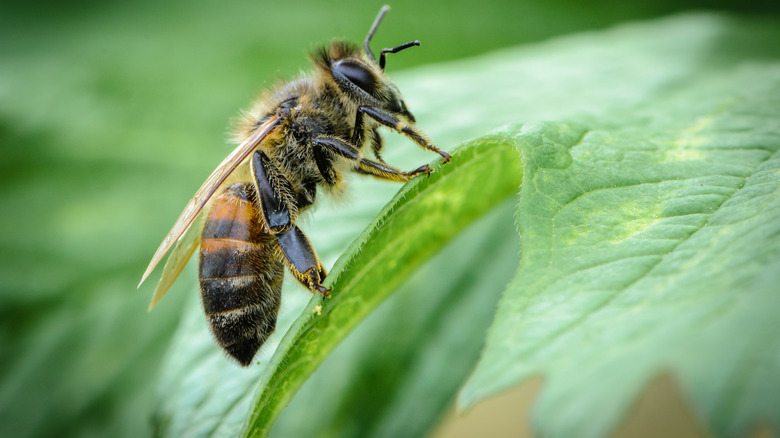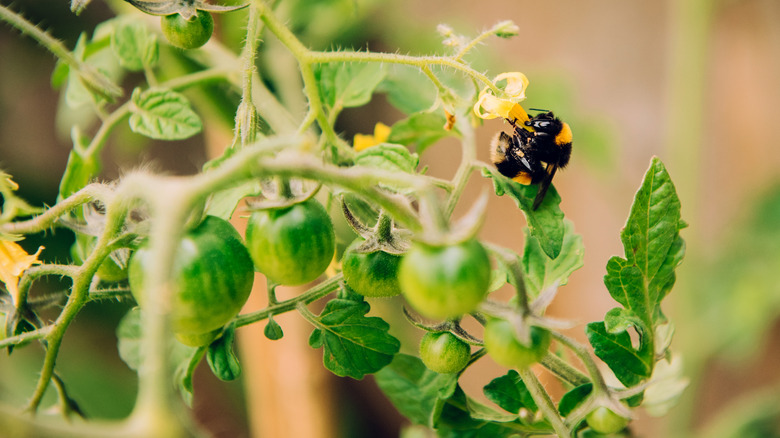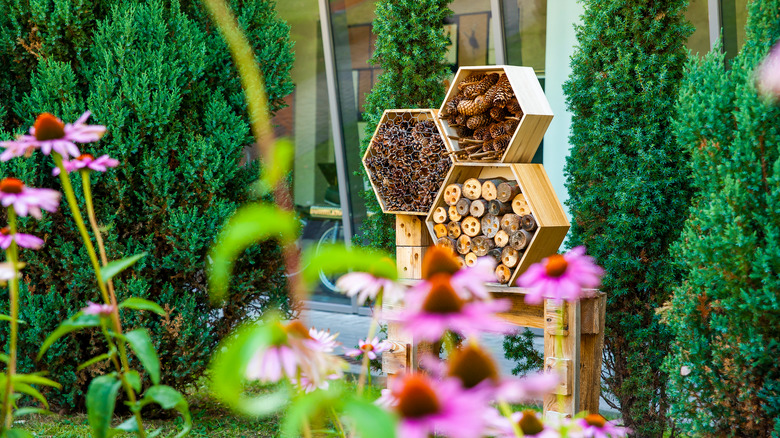Why And How To Attract Leafcutter Bees To Your Garden
When our gardens are in full bloom, and vibrant colors are flowering everywhere, there are certain guests we hope to attract with its blossom aromas, including hummingbirds, butterflies, and honeybees. But these are not the only pollinators you should expect to visit your garden; leafcutter bees are also wonderful to see buzzing around. Leafcutters are native to North America and earn their title from cutting leaves to create their nests. They are smaller in size than the average bee and are known to tend to the smaller flowers that are often overlooked by other pollinators. These bees are drawn to all different kinds of wildflowers, fruits, and vegetables and are vital to our ecosystems, offering a level of fertilization we can't accomplish with just honeybees.
Leafcutter bees are essential to agriculture and used commercially to fertilize alfalfa flowers, among others, that honeybees don't sufficiently get to. When attempting to coax these busy bees into your garden, you can grow luring plants like roses, clover, lilacs, and hostas and create spaces perfect for their nests.
Why leafcutter bees benefit your garden
While leafcutter bees carve out a small portion of your plant's leaves, they do not cause damage and take as little as possible. You can usually tell that a leafcutter bee is the culprit for your plant's holes by how smooth and circular the cut-out is. Other plant-eaters, like caterpillars, will produce rigid and odd shapes. These bees are most active in the prime of summer and pollinate all the popular garden staples like melons, cucumbers, squash, and beans. Many people familiar with this species will often prefer them over the famous honeybee. Leafcutters are solitary and do not flock to a colony, making them less aggressive and even producing less painful stings on the rare occasions it occurs.
Ideally, your garden will have honeybees and leafcutters, but you'll get better plant pollen dispersal with the latter. Leafcutters hold their pollen under their bellies, keeping it dry and making it easy to spread, while honeybees' pollen is a sticky consistency that doesn't apply as effortlessly. Leafcutters also won't travel as far as honeybees; instead, they stick close to home and don't carry in pollen from far-away sources that could contain chemicals and contaminants. A female leafcutter can pollinate as many plants as 20 individual honeybees, usually more than 2,000 flowerings a day. With these solitary bees, you'll find your garden giving much bigger and more fruitful produce.
How to attract leafcutter bees
Not only can certain plants like strawberries, sunflowers, and asters attract leafcutter bees with their soft foliage, but you can offer accessible housing for them to nest. Leafcutters like to burrow in rotten wood with cavities, empty snail shells, holes in concrete, or any other snug openings in places like outdoor furniture. It would be best to have these DIY homes ready to go when temperatures reach a consistency of 75 degrees Fahrenheit and above throughout June to September, which is when leafcutters are most active. You also don't necessarily need to worry about insecticides pushing them away, as they are usually unaffected since they don't consume the leaves. However, avoiding the application to your garden is still helpful.
You can build a house in your yard using untreated wood or hollow reeds. When drilling holes into your blocks of wood, you'll want to create smooth incisions that won't catch on their wings or legs as they fly in and out. Hanging or mounting these in an area that gets plenty of sunlight but won't allow rain to seep into the holes will be most successful. It's important to be on the lookout for wasps taking these over, or if it's on the ground, ants and beetles.


